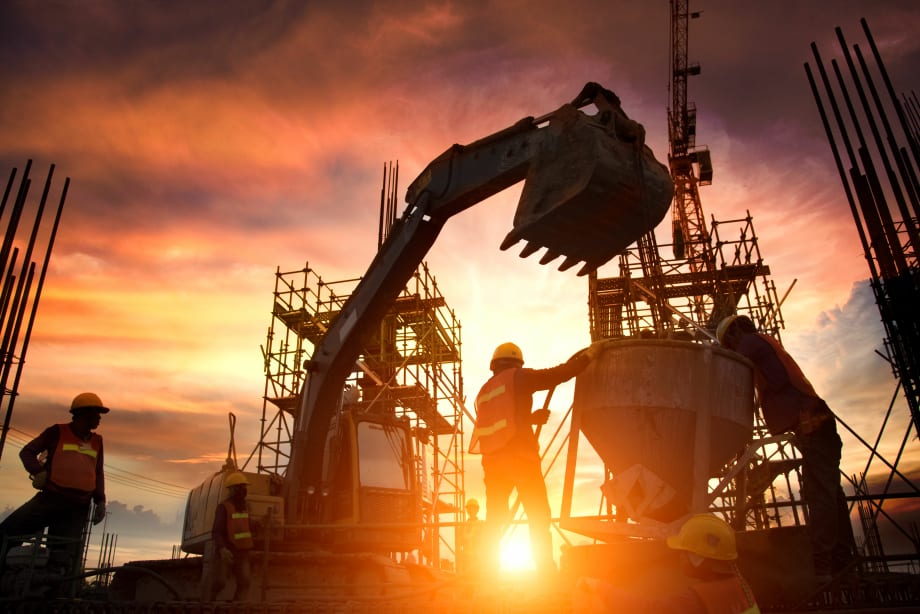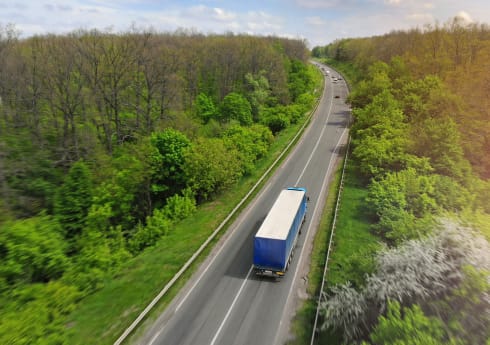A Complete Overview of Construction Equipment Telematics
Telematics systems are already very popular in business fleet management. But they can be used for so much more than fleet monitoring. You just have to think big with telematics.
In this guide, we’ll talk about how you can take advantage of construction equipment telematics to future-proof your construction business and enhance your operations. Or, if you’ve already decided to use telematics for construction equipment, go ahead and get a quote.

What is construction equipment telematics?
Fleet telematics systems are widely used in many industries to get detailed information on vehicles, construction equipment and all kinds of fixed assets. Telematics for construction equipment is all about data.
Data provided by construction equipment telematics includes GPS location, fuel consumption, engine idling and other full reports to help you with asset and vehicle management, maintenance, job dispatch and more.
iCompario tip
Telematics already plays a central role in the heavy equipment and construction industry. It helps reduce the downtime of construction equipment, which is crucial to avoid seriously disruptions of the workflow. Businesses that use telematics have seen significant improvements of their operations and consider telematics to be a great advantage. Secure your business with telematics now!
Telematics to cover your entire business operations
When you manage a construction company, you have many and varied assets to track. Perhaps, more than other companies. At least when it comes to their variety.
The good news is a telematics system will cover all your assets, on or off-road.
Construction equipment telematics used on the road
Construction equipment isn’t all about cranes and diggers. Construction companies use on-road vehicles extensively to carry people and materials.
So, telematics allows you to monitor these vehicles, keep them in top shape, secure your transports and your people. Geofencing can be used to get alerts every time a vehicle leaves or enters a designated are or arrives at a job site.
There’s also enhanced route planning. You’d be surprised how much this can improve your efficiency.
Telematics can also provide driver performance reports. You can quickly identify where drivers are falling short and set tailored training in place to address these issues.
Construction equipment telematics for off-road assets
Ok, so construction equipment may not be all about cranes and diggers, but heavy machinery is a crucial part of the construction equipment. And it’s important to monitor the location and performance of this machinery. We do that best by tracking plant equipment.
You can easily check if equipment is sitting idle, if it requires maintenance and track its hours of use. Also, it’s easier to allot the equipment to the right sites to get the jobs done and make money.
iCompario tip
Tracking your assets improves security. Without asset trackers, only 5% of most types of stolen plant equipment is ever recovered. Yet, there are some asset tracking companies whose recovery service, working with the police, is as high as 95%.
Top benefits of construction equipment telematics
The ultimate goal of telematics in construction equipment (and not only) is to bring value and provide managers with the necessary tools to better manage their equipment and vehicles. Its many features can help you get important benefits and advantages that we’ve detailed below.
1. Using telematics for asset tracking
Most people, when they hear tracking, they instantly think of pinpointing the location. And yes, that’s a very important feature of GPS vehicle tracking. But it’s not all there is.
So, what else do we mean by asset tracking?
- Improved security and protection against theft
- Monitoring to quickly detect any misuse or misappropriation of either vehicles or equipment
- Reports on usage data to help you determine whether the asset is being efficiently used and allocated
- Tracking of idle times and making better decisions based on this
iCompario tip
It’s not just powered equipment you can track; non-powered assets can also be easily tracked. Choosing battery-powered asset tracking solutions, you can track all kinds of construction equipment. The tracker is usually self-install, easy to hide on the equipment and gives you better control over your valuable business assets.
2. Using data to make wise decisions
It’s important to know how and when to deploy a piece of construction equipment. If your assets are idle, that means a lot of downtime. And downtime can be very expensive. Also, think about it – if you know when a machinery is operating at all times, that means you can easily identify unauthorised use.
It’s also important to know when maintenance is needed. Construction equipment gets yellow iron and other sedimentary, it gets a lot of wear and tear, engine hours and idle time. Construction equipment telematics can read all these metrics to give you all the info you need to schedule proper maintenance works on time.
There are other data reports you get from a telematics system for construction equipment. Reports like:
- Driver hours helping you determine the hours of service
- Driver/operator performance which can be very useful to correct wasteful behaviours
- Fuel usage – how much you waste, when and why you waste too much
3. Asset allocation made easy with telematics
Knowing the location of your construction equipment at all times is really important for a number of reasons:
- You want to know what equipment is located where
- You want to know how long a piece of equipment has been on a certain site and why it’s there
- You want to know whether the equipment is active or idle and for how long it’s been sitting idle
Why do you want to know all this? Because it’s important to make informed allocation decisions.
Imagine this. One of your diggers is on site X and you it hasn’t been used in two days. With telematics for construction equipment, you’ll immediately know you have an asset sitting idle. You can quickly find out why it’s not being used. If it’s not needed on site X anymore, you can move it to site Y, where you need a digger ASAP. That’ll reduce downtime and save you money.
Now, as mentioned, with construction equipment telematics, you’ll get this information instantly. You can monitor your assets in real-time. If the information your digger is sitting idle would be delayed, that’d be a loss for your business.
Using a telematics system for construction equipment saves you time and money, helps you improve efficiency, helps you observe or even reduce job completion times.
Find the best telematics solutions for construction equipment
The question remains, how do you know what the best telematics solutions for construction equipment are?
It can be a complex process. First, you should know what exactly your business needs are when it comes to construction equipment telematics. What features you’re looking for, what reports you want to get. Then comes the hard part – searching the market, finding telematics solutions and providers, comparing them and choose one hoping it’s the right choice.
A much simpler solution is to fill in our 30-second form, then go on and mind your business. We’ll do the searching and comparing for you. We’ll get back to you with a proper solution to fit your business needs.

